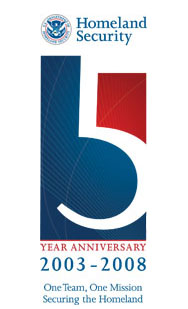Office of Emergency Communications
The Office of Emergency Communications (OEC) supports the Secretary of Homeland Security in developing, implementing, and coordinating interoperable and operable communications for the emergency response community at all levels of government.
Mission and Objectives
The mission of the Office of Emergency Communications is to support and promote the ability of emergency responders and government officials to continue to communicate in the event of natural disasters, acts of terrorism, or other man-made disasters, and work to ensure, accelerate, and attain interoperable and operable emergency communications nationwide.
On October 4, 2006, President George W. Bush signed the Department of Homeland Security Fiscal Year 2007 Appropriations Act, which established the OEC. The legislation assigned the OEC to the Department of Homeland Security’s Office of Cybersecurity and Communications within the National Protection and Programs Directorate.
The OEC Office of the Director was established to oversee the transition of three programs from other DHS entities into OEC—the Integrated Wireless Network (IWN), the Interoperable Communications Technical Assistance Program (ICTAP), and the SAFECOM program (excluding its research, development, testing and evaluation, and standards functions).
OEC became operational on April 1, 2007. During its first six months of operation, OEC has engaged with the nation's emergency response community at the local, tribal, state and federal levels on numerous initiatives designed to ensure, accelerate, and attain interoperable emergency communications nationwide. Among its accomplishments, OEC has:
-
Coordinated with FEMA and the National Telecommunications and Information Administration (NTIA) to develop a peer review process to evaluate, approve, and provide feedback to states and territories on their SCIPs and Investment Justifications (IJ), both of which are required in order to be eligible for PSIC grant funding.
-
Provided technical assistance services through the Interoperable Communications Technical Assistance Program (ICTAP) to state, local and tribal entities in support of the HSGP and the PSIC Grant Program. As of mid-August 2007, the ICTAP program had provided technical assistance support to 40 states.
-
Provided training and assistance on the Communication Assets Survey and Mapping (CASM) software tool to assist emergency management personnel from more than 75 metropolitan and urban areas with data from 8,000 agencies plan the deployment of interoperable communications resources and mutual aid with neighboring communities when a rapid response is critical.
-
Developed Phase 1 of the National Communications Baseline Assessment (as outlined in New Title XVIII of the 2002 Homeland Security Act) providing the first comprehensive assessment of interoperable emergency communications capabilities, including operability and interoperability, across all levels of government (federal, state, local, and tribal) and private sector entities. Phase 2 will be completed in 2008.
-
Conducted nationwide outreach initiatives to support and promote the ability of emergency response providers and government officials at all levels of government to communicate in the event of natural disasters, acts of terrorism, and other man-made disasters.
-
For the Golden Phoenix Interoperability Joint Training Event in Los Angeles, ICTAP provided technical evaluators and planning assistance to measure and evaluate communications interoperability across the continuum of first responders, DoD, and participating state and local government entities and non-governmental organizations.
-
Coordinated with the Department of State, NTIA, DoD, DHS/CBP, and the FCC to develop a long range cross border communications plan that will allow the public safety community at all levels of government to communicate for law enforcement and emergency purposes with their counterparts in Mexico. This plan is expected to be in place beginning in July 2008.
-
Provided equipment and training to the Gulf Coast states—including Florida, Georgia, Kentucky, North Carolina, Oklahoma, and Texas—in preparation for hurricane season. The training addressed the need for Standard Operating Procedures, Governance, and usage of the equipment in its designated communications planning environment.
This page was last modified on October 24, 2007


